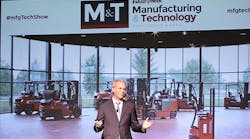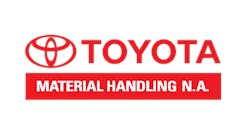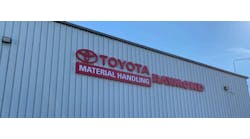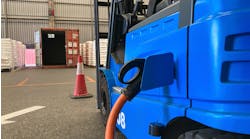“Making things is about making people,” Brett Wood, president and CEO of Toyota Material Handling North America, said in his keynote address at the recent 2017 IndustryWeek Manufacturing & Technology (M&T) Conference & Expo in Cleveland. “From the beginning, we set a goal for every associate to understand that we value their ideas. We value their suggestions. We want to help them make improvements to their process. It’s simple—we want to make their jobs easier and their lives better.”
Toyota Material Handling makes plenty of things—200,000 forklifts a year, one of every three sold in North America. The Toyota division has three U.S. factories, employs 8,000 and has annual sales of $3.5 billion. Training and empowering employees to focus on continuous improvement produces a workforce of 900 inspectors on the shop floor at the Columbus, Ind., facility, says the company, where quality is checked at every stage of production rather than at the end of the production line.
Wood shared “nine key takeaways” with M&T attendees that are designed to promote employee engagement and continuous improvement that leads to operational excellence.
1. Educate your associates on what is expected of them. Wood noted that Toyota provides new employees with a brief introduction to the Toyota culture but does not overload them with classroom theory. Instead, it relies on a substantial amount of on-the-job training. They are assigned a leader who becomes their sensei or teacher during this process.
2. Engage your associates in making changes. Wood said Toyota does this by showing them the company’s commitment to continuous improvement every day. The first question they hear from leaders in the morning is, “How’s your process?” If they have problems or suggestions to report, it is written down and a leader comes by in an hour or two to find out what is going on.
3. Empower your associates to make the changes. When they can make small changes themselves, they are encouraged to do so. Otherwise, engineering or other resources are brought in. Wood said the company’s goal is to make changes within 25 days. He said it was critical to respond quickly to employees, even if only with feedback, so employees don’t lose faith in the process.
4. Consistency is a key factor in continuous improvement. For example, Toyota’s forklift manufacturing plant in Columbus, Ind., holds a quality assurance meeting every day at 1:30 p.m. The meeting provides an opportunity to examine any defective parts and determine what can be done to correct the problem. The plant also has a daily meeting at 7:30 a.m. in the “adrenaline room” to discuss three things, Wood said: “What we did right yesterday, what we did wrong yesterday and what we can do better today.” In the 20-minute meeting, every department leader has the opportunity to provide information that can lead to improved performance. The walls of the adrenaline room are lined with data charts showing key plant metrics.
5. Develop new visualization tools to help all associates visualize what is happening in your plant. He showed attendees photos of electronic display boards where employees can see real-time data on production and plant processes. “Real-time data results in real-time action,” he noted. Toyota also started this year to color code uniforms. Wood said this lets everyone quickly identify, for example, team leaders, quality inspectors, or health and safety personnel.
6. Practice genchi genbutsu. In other words, go to the place where the work is done—factory or office—and see with your own eyes what is going on.
7. Visit customers and ask for their ideas. “I think you might be surprised what great ideas they have whether for your product or your processes,” said Wood. He noted that earlier in his career, he was in charge of product planning and tasked with visiting 20 customers a year. “Some of the best kaizen ideas we have ever heard were from our dealers and our customers,” he recalled.
8. Look for kaizen opportunities in the office environment. “If nothing else, it will make that group of people feel really engaged if you ask their opinion and work on their projects,” Woods observed.
9. Culture is king. Culture is so important, Wood explained, that Toyota recently started a culture award, where associates nominate other associates and employees vote for the winner.
“Innovation, change and continuous improvement start at the top at your organization. It starts with your leaders,” said Wood, citing the saying, “Managers manage but leaders do the right thing.”
Steve Minter is executive editor of MH&L’s sister publication IndustryWeek.



